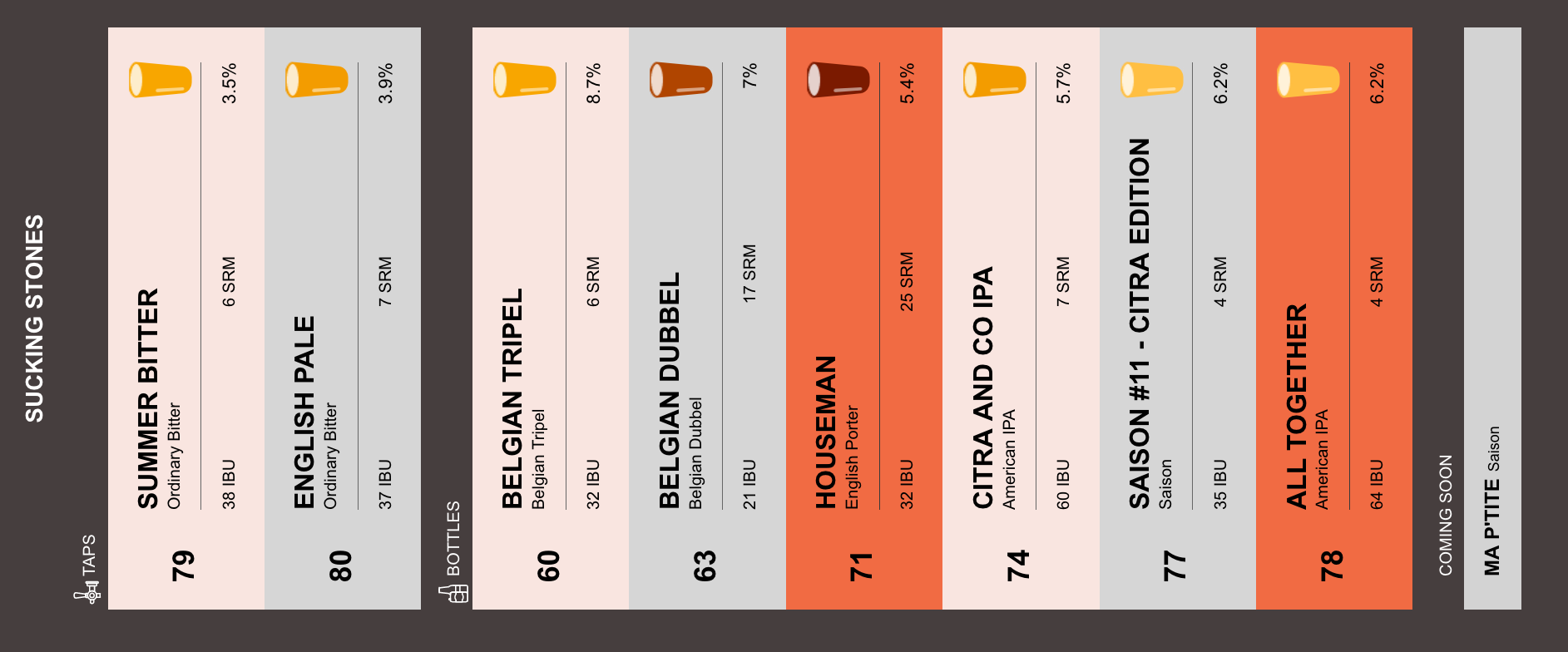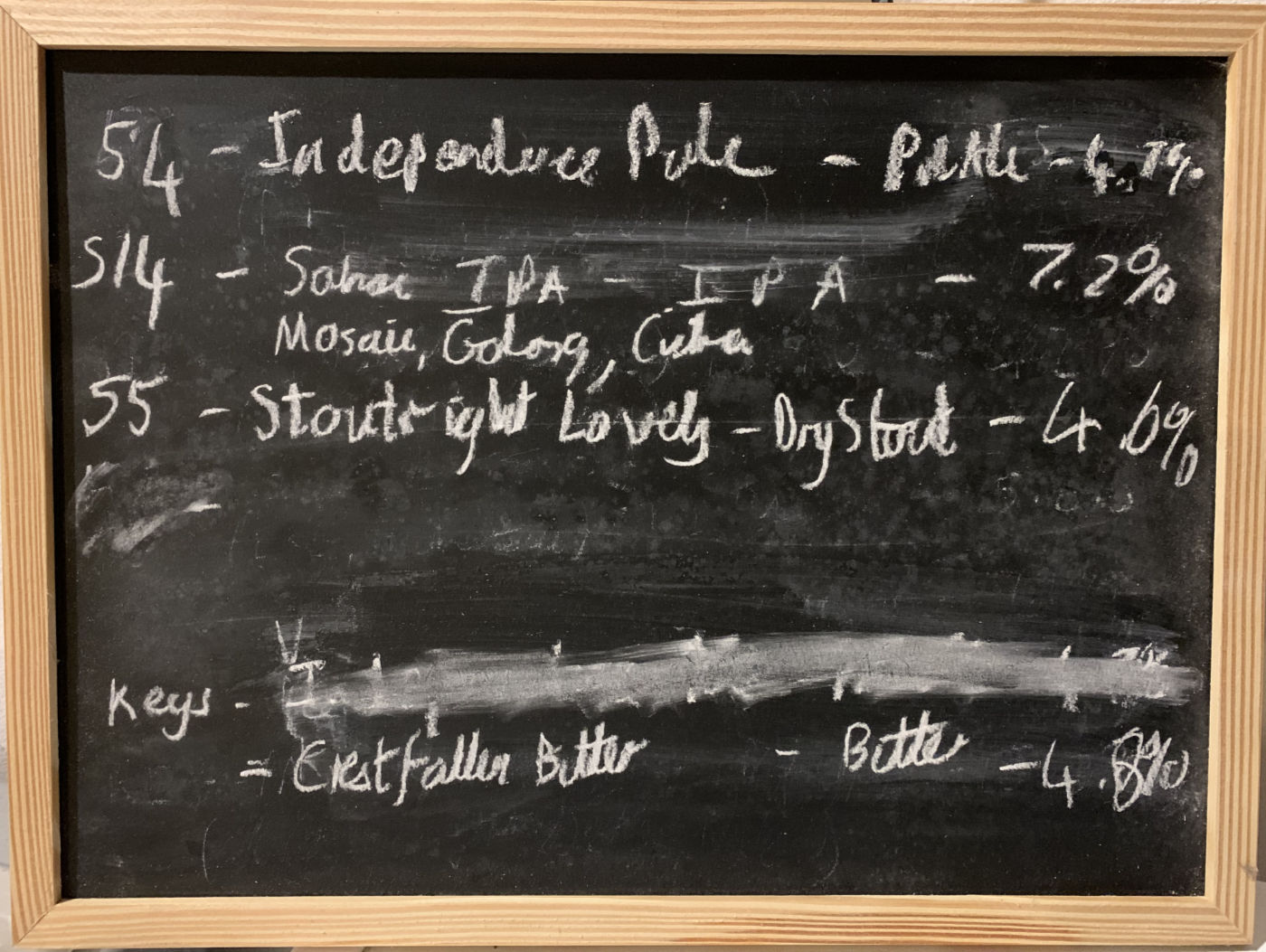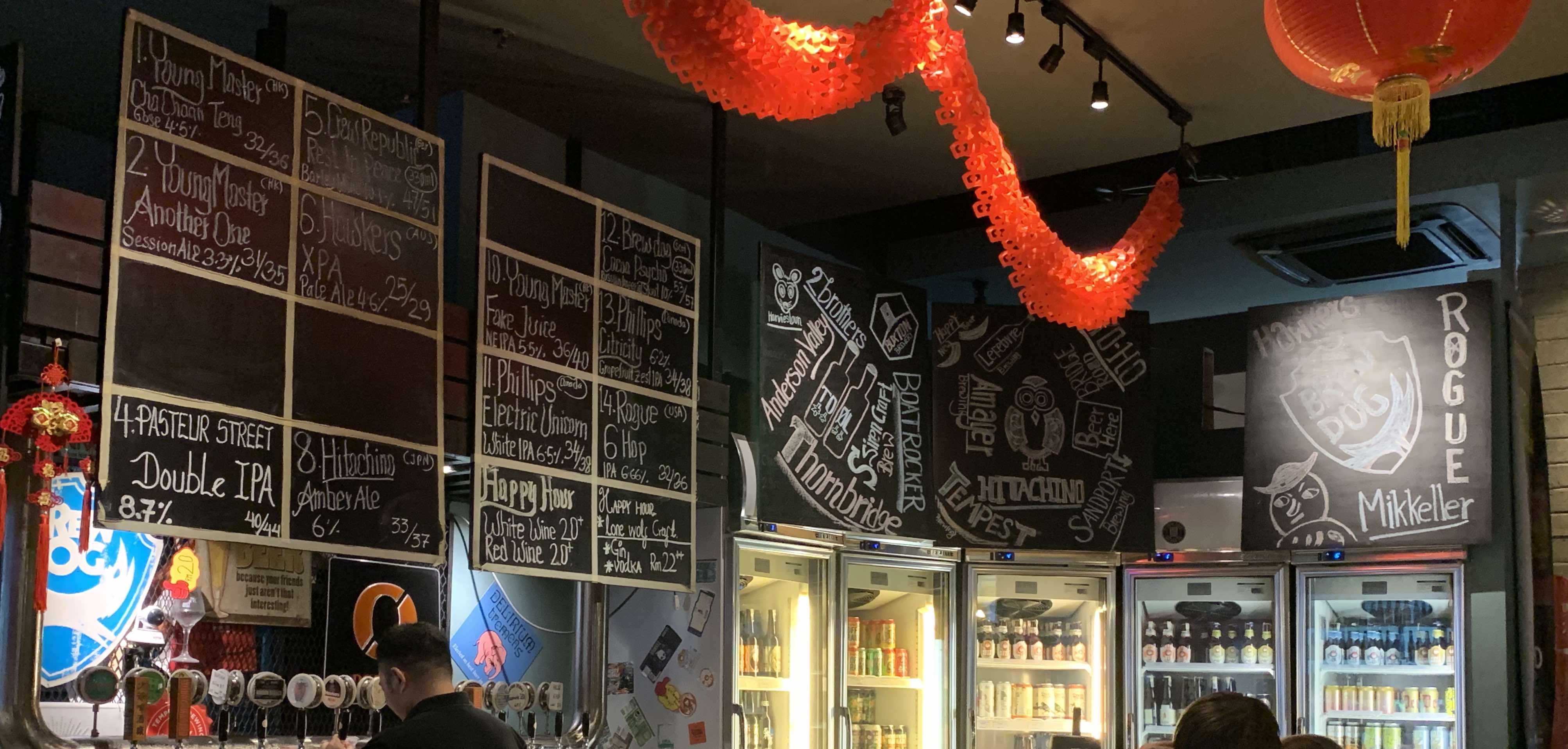The Session: Unprecedented Normal
01 May 2020
I’m not sure which beer-lover tweeted the link which brought my attention to Alistair Reece’s announcement of the Quarantine Edition of The Session. But I raise an eyebrow of thanks over my plague-mask towards the router and in their cyber direction.
For the theme - drinking in these most unusual of times - struck a chord. As a beer fan and frequent home brewer, my strategy for managing these hobbies - these obsessions if you like - has been consciously evolving from the day I abandoned my office in town to work from home back in early March.
Those early days were marked by stress. The unknown, the uncertainty, and the fears they create, played heavily on my mind and body as the surprisingly serene zombie movie played out in the slowest of slow motions. And without any zombies. I’ve lived through a few periods of extreme stress already, so I’m familiar with how it affects me. I was ready for the lack of apetite, the small meals, and the abrupt, early wakings. And, as usual under such cicumstances, my urge to drink was low. For this trait I’m thankful.
The urge to brew, though, was strong. And with more free time, I quickly started to plan out the next few batches.
At first I thought I could brew 2 or 3 times a week. But the reality of having to consume most of this output myself under lockdown soon put check to that idea. Combined with reduced exercise, it seemed like a particularly bad idea. I also had work to get on with (and a lot of lost financial ground to try to make up, thanks to the implosion of business). And so, I settled on maintaining a schedule and a few rules. No beers in the day (except for gravity samples, as necessary, at lunch time), and keeping main brewing activity to weekends - partly to preserve weekends as something different.
I’ve kept to my schedule, and even started to enjoy the pace of life as the stress has dissipated. And since then, I’ve brewed, in order, an IPA, an almost Kölsch, a dark and woody ESB, a Saison, another IPA alltogether.beer - and, most recently, two Ordinary Bitters.
It’s those two Ordinary Bitters which have given me the most pleasure, though, and for a couple of reasons. Firstly, as a teen in the North of England and then a student in London, I grew up with British ales. They have a great nostalgic pull for me - even if the specifics of those pints in the late 80s and early 90s are beyond taste recall now.
Secondly, my first solo brews were bitters - an Ordinary, followed by a Best. And they were, to be kind, lack-lustre. They certainly didn’t match up to the early-90s glory pints of my imagination. I visited London again last summer (I now live in Southeast Asia) and studied the modern British bitter in some depth (seriously! I mean really thinking about it, taking notes, etc. It’s hard, and thirsty, work). I feel that, at last, I’m starting to have enough understanding and brewing skill to produce a bitter I’m pleased with (if not yet totally proud of). It’s taken quite a few years - but to have this beer within reach feels like an achievement.
But finally - and this is perhaps most pertinent to the given the theme - the low abv, the subtle hopping, the welcoming and moreish drinkabilty of the style is, I’m finding, precisely what I want in these times. I enjoyed (and, of course, continue to enjoy) the stronger and more robust IPAs and Saisons down in the basement. But in a world of work from home, with a slower pace, no time spent commuting, and less division between the bustle of the day and the few hours of evening respite, I find less craving for that big wallop of hops and booze. And more comfort in the milder aesthetic of a quiet but flavoursome pint (or three or four) of bitter.
So for now, at least, Ordinary has become my new normal. I don’t know how long it will last - but I feel like there’s plenty of space to play in this field. Oh - there’s a table Saison in the fermenter, right now, too, continuing the small beer theme. Maybe in times of chaos and cataclysm, there’s some solace and comfort to be found in a more modest brew.
Stay safe and drink well.
BrewBoard.app (coming soon) - The Background Story
28 April 2020

When I’m not obsessing about yeast, bacteria and their products, I’m normally engrossed in code and software design. That’s the day job which pays for the yeast ranching. But over the last couple of months, the two strands of my life have been coming together. The work I normally do has largely dried up. And instead I’ve been focussing my code skills almost entirely on a brewing-related product - supported by my amazing co-workers (now also cast adrift on the sea of unknown).
This is a project which traces its story back to October last year. I’d just finished kegging and fast-carbonating a bitter. I was about to add it to the chalk board which sits next to my beer fridge in the basement. And, as usual, I didn’t have the details to hand - hops, abv. Easily solved with a run upstairs to check my notes and the recipe in Brewer’s Friend. But, back in the basement, I noticed that the last brew I’d bottled wasn’t on there either…
I love my old chalk board. But it suffers from a few weaknesses. It requires data from elsewhere, which typically means running around the house. This means it doesn’t always get updated in the general busyness of brewing and packaging. So the first problem is that it isn’t always up to date - and, related to that, I don’t always know if its up to date or not.
The second problem is that it’s often not there when I want it. I live in a house, not a bar. While I keep the chalk board next to my fridge and kegs in the basement (as a necessary point of reference), I’m normally sitting elsewhere as I share brews with friends and family (at least before the current situation - and hopefully again in future). The board’s not there when I want to ask what they would like next, or for reference when we’re talking beer. It’s also not available when I’m sipping a coffee in town idly thinking about what I should brew next - and wanting to review what I have in stock.

Finally, my handwriting isn’t that great. I probably can’t blame the board for this, strictly speaking. But, anyway, things aren’t always legible to visitors. Or the brewer.
I’m not sure if it was immediately after kegging that bitter, or perhaps on the next brew day, but I was showering off brewery grime when it struck me that I’d like the brew board to be right in my pocket. And I realised I could grab the brew details straight from Brewer’s Friend’s API easily enough. Whatever the timing, I was excited enough by this that I sat down that Sunday evening and hacked out a very rough version. By bed time I had my brew board in my hand on my phone.
However crude that first cut was, I felt there was something in it. I added a QR code to the brew board so I could share it to my brew/drinking buddies with a quick scan of my phone screen. Now we all had our own copy to look at.
And that’s how all this began. I took what I had into the office, and over subsequent months my colleagues helped me flesh out some of the design and details - and we gradually realised that there was some potential in this. Since the world started falling apart here in early March, we’ve doubled down on getting this ready for putting out there. And we’re looking to introduce BrewBoard.app really soon. (If you go there you can sign up to be notified as soon as we launch - or maybe we’ll be open for business by the time you visit. You can also follow along on Instagram too).
Personally, I’ve been using this since last October (my chalk board is like a museum piece - maybe I should just update it from my BrewBoard). At the end of my brew day, I pull up my BrewBoard, select add a brew, then select the brew to add from Brewer’s Friend. If necessary I update the original gravity. And I mark the brew as Coming Soon. A week or two later, after packaging, I switch the brew from Coming Soon to Available Now, maybe updating the Final Gravity and ABV in the process.
So now I’ve got an up-to-date, accurate, shareable BrewBoard. My friends know what’s on tap, and what’s coming soon. They can even look at the recipes for the brews. And it’s in my pocket all the time.
Anyway, that’s how I’ve been keeping sanity during lockdown. Looking forward to sharing it with brewers everywhere very soon.
We’ve so many cool things to add to this in the coming months. Let’s take the chalk board to a new level!
3 comments so far. Share your thoughts.
Kuala Lumpur (and a Seabrew 2019 Bangkok Catchup)
14 January 2020

It’s mid January, I’m in KL and I’m feeling a little guilty. For I have fallen behind. As I sup this small can of Guiness Foreign Extra Stout I’ll make amends with a quick post to bring things up to date.
I’m just back in my room from an evening at Kuala Lumpur’s Tap Beer (specifically the original Bukit Bintang Branch). I understand that this place has a connection with the founder of Hong Kong’s Young Master Ales via this article. And their beers were certainly in evidence as the brew board shifted around through the evening.
I began with Young Master’s Gose:
There's a butteriness on the nose which surprises me. In the mouth the sourness hits immediately, but it is a mild sourness, also slightly mealy and dry. Body is light, and the taste is refreshing. The salt lick lives on the lips a few seconds after the swallow.
Next I upped the hops a touch
Malty and tropical on the nose. Light body and slightly sweet finish. Pineapple, mango, coconut flavours backed up by only a touch of bitterness.
This left me wanting some deeper hoppiness, so:
Pine, grass and gooseberries on the nose. Good head. Boozy, with big grassy and overripe tropical flavours - papaya and mango.
Classic big American West Coast IPA. Bitter, piney, citrus. Malt heavy with juts a bit much crystal for my palate.
Raisins and preserved fruit with a woody, hessian note on the nose. Full mouthfeel with booze, coffee and flickers of liqueur as it goes down.
A change around on the beer board opened up the next refreshing move:
A welcome break. Fruity nose. Citrus and apples, medium body, but not much bitterness.
My pallet did not need this hammering. But it did grow on me as I slowly went though the can. Bitter and grainy and deep. Too deep. My first time with this beer I've heard about many times.
What’s missing here is local brews - but given the restrictive laws around brewing in Malyasia, expecting them would have been unrealistic. At least Kuala Lumpur did have craft ales (and a lager) to offer. I’m thankful for that - and also thankful to my long-time friend Andy who drank his way through the beer menu with me on this occassion. We finished the evening with a sour and fruity passion fruit wheat beer, courtesy once more of Young Master.
So, SeaBrew 2019 in Bangkok? It’s now several months past and almost too late for comment. But it was an amazing conference and one of the highlights of the year for me. Technical and panel sessions were enjoyable and informative, but most compelling was the energy and friendliness of the many brewers from across Asia and further afield I had the fortune to meet. It was a good moment for Thailand’s craft brewing scene too, both a reward for the work they’ve put in over the past few years, and galvanizing for the future. Really hope I can make it to this year’s event in Taiwan.
No feedback yet. Share your thoughts.



No feedback yet. Share your thoughts.